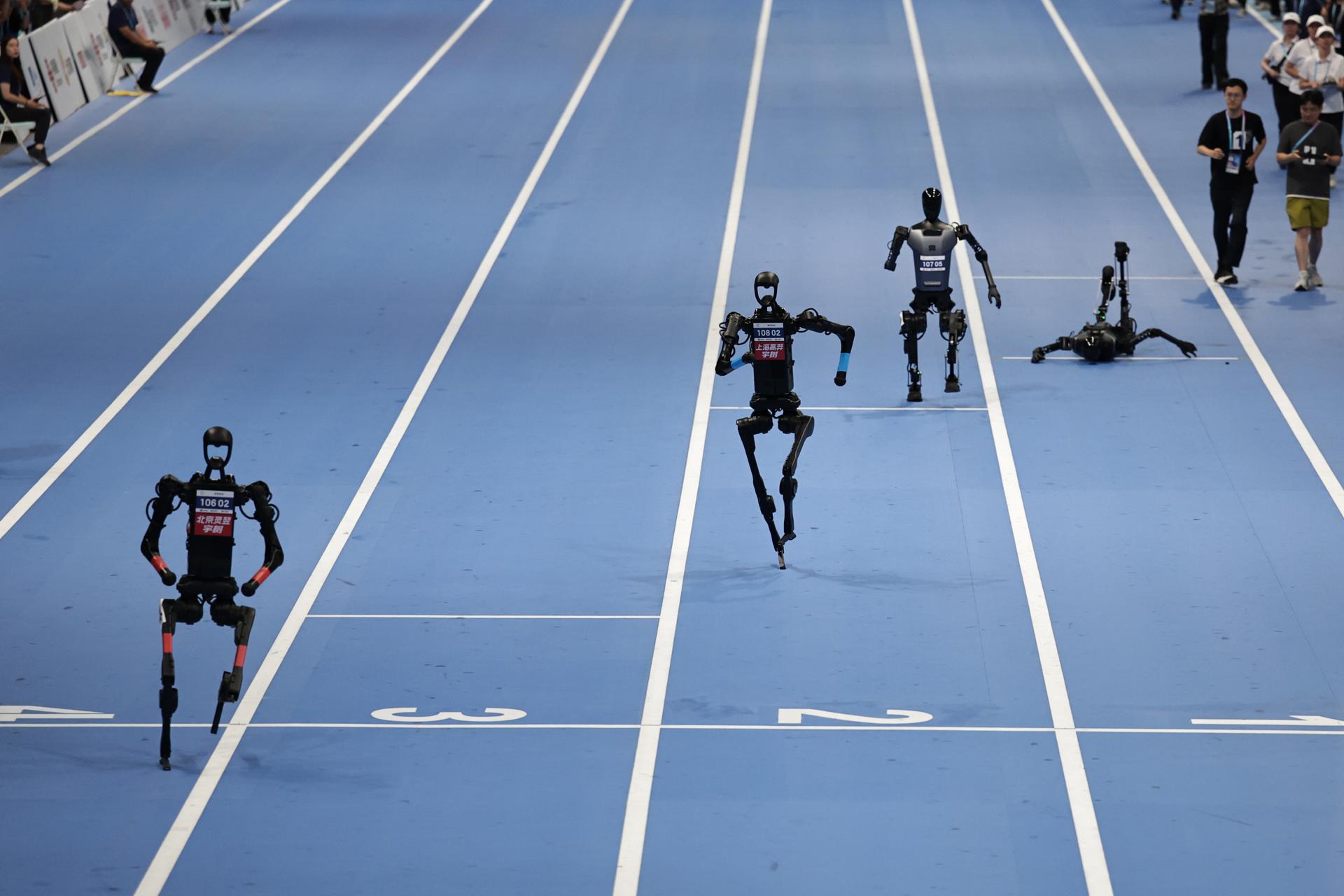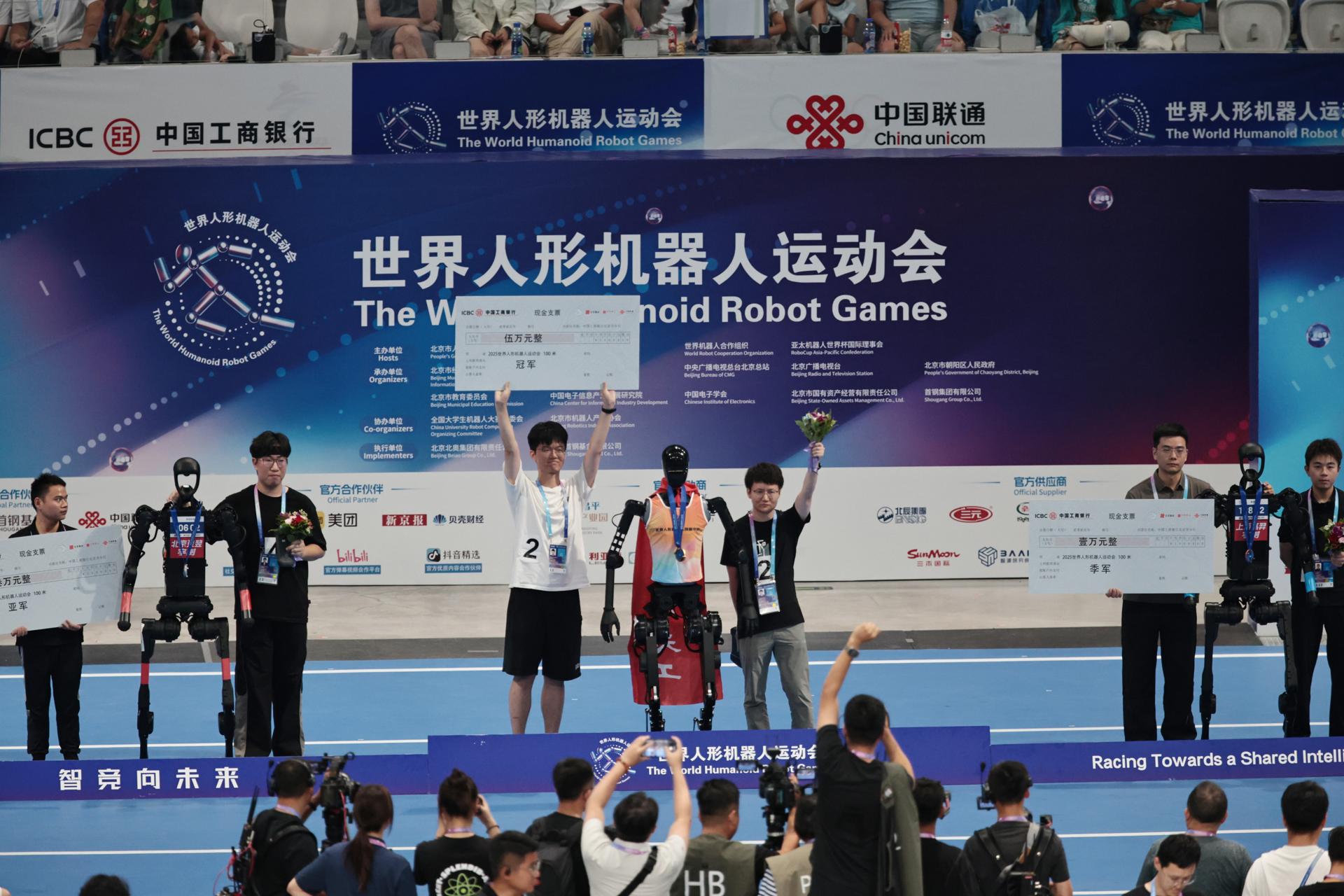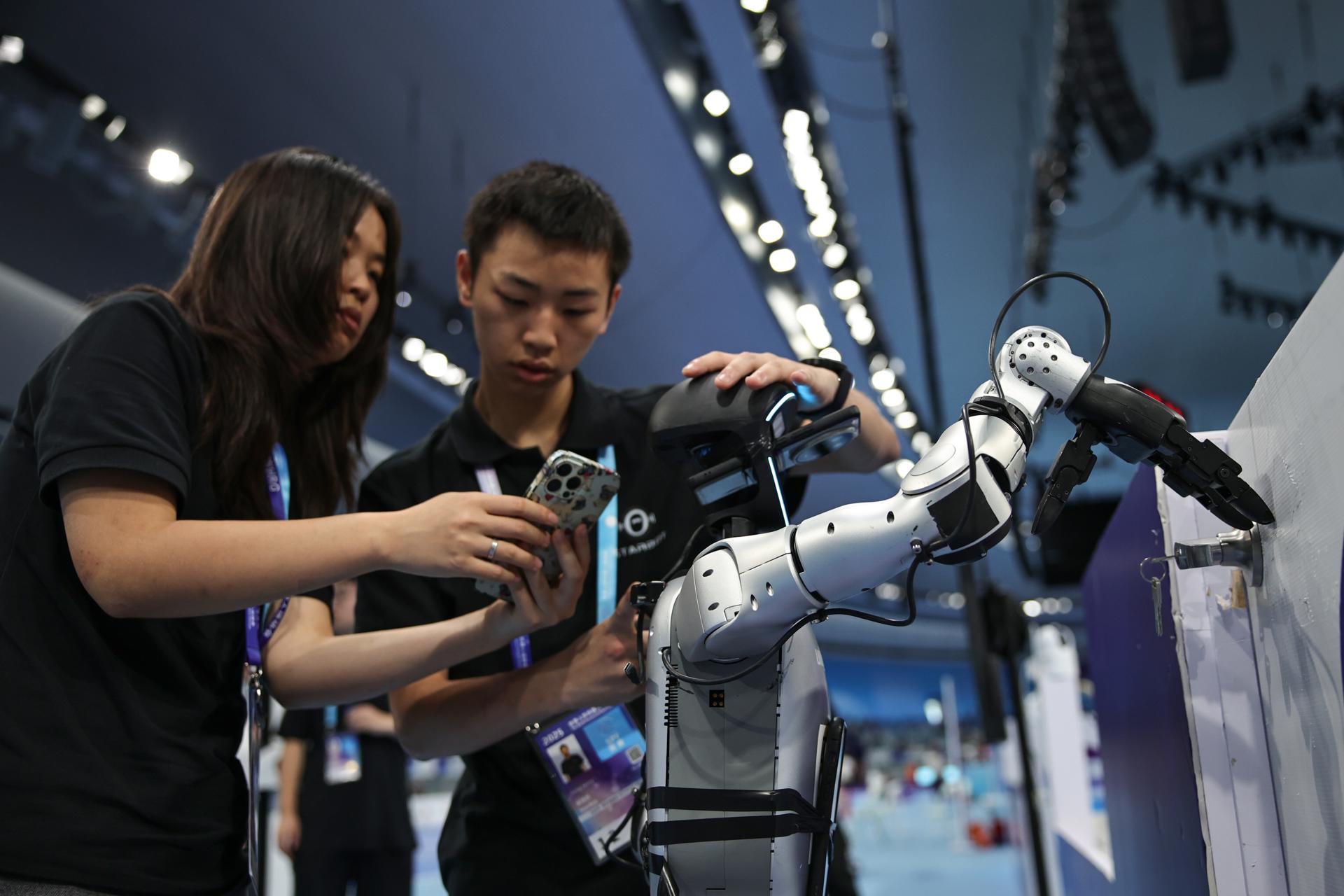This is how the first World Cup of humanoid robots was experienced in China: soccer, boxing, and athletics in a historic competition.

More than 500 humanoid robots participated in the inaugural World Humanoid Robot Games, an international tournament held at the National Speed Skating Oval in Beijing, China. A total of 280 teams from 16 countries entered the competition, competing in disciplines including soccer, athletics, dance, boxing, and martial arts.
The competition took place in the stadium originally built for the 2022 Winter Olympics, with a capacity of 12,000. Robots from the United States, Germany, and Japan excelled in several tests , showing significant advances in mobility, coordination, and motor response.

More than 500 robots participated, distributed among 280 teams from 16 countries. Photo: EFE
One of the most striking events was a futsal match in which ten robots, roughly the size of a child, faced off on a small field. The participants struggled to move, getting tangled up in fights and frequently falling. Despite this, one robot managed to score a goal, while the goalkeeper fell to the ground while trying to save it.
In Thai boxing and taekwondo, robots equipped with protective helmets and gloves demonstrated their ability to execute coordinated movements, while in the 100- and 1,500-meter races, their speed and endurance were measured. A robot from the Chinese company Unitree completed the 1,500-meter distance in 6:29:37, a time that, although slower than that of elite human athletes, significantly surpassed that of its robotic competitors.
Technology put to the test for practical purposes The goal of the competition was to evaluate and refine the capabilities of humanoid robots in challenging contexts. According to the organizers, the sport represents an ideal environment for testing skills such as decision-making, balance, coordination, and response to unexpected situations.
These tests are part of a broader strategy driven by the Chinese government, which seeks to position itself as a global leader in humanoid robotics. With a national roadmap aimed at building a world-class industry by 2027, several cities in the country, such as Beijing and Shanghai, have created investment funds of up to 10 billion yuan (around $1.2 billion) for the development of the sector.

The competitions included soccer, athletics, boxing, dance, and martial arts. Photo: EFE
In addition to entertainment and research, China sees humanoid robots as potential solutions to address social and economic challenges. One of the intended uses is caring for the elderly, in a context of an aging population.
According to a recent People's Daily report, robots could provide emotional and physical support to the elderly in the near future.
Their incorporation into industrial production lines is also being considered as an alternative to human labor. Until these applications materialize, sports competitions will continue to serve as a testing ground for perfecting their performance.
During the event, in addition to athletic competitions, the robots participated in fashion shows alongside human models. In one highlight, a robot model lost its balance and had to be removed by human assistants, reflecting the remaining challenges in terms of stability.

The event took place at the National Speed Skating Oval, the 2022 Olympic venue. Photo: EFE
The Nation (Argentina) / GDA
More news in EL TIEMPO *This content was rewritten with the assistance of artificial intelligence, based on information from La Nación, and reviewed by a journalist and an editor.
eltiempo





